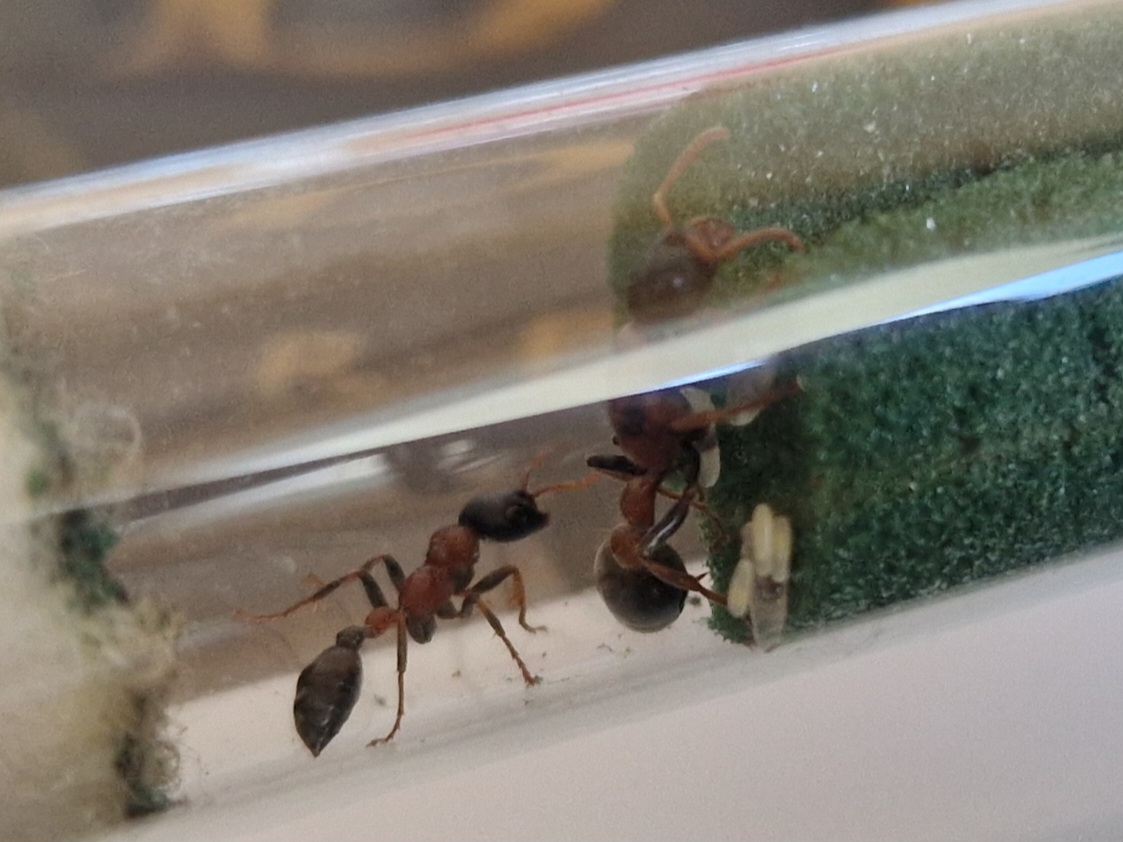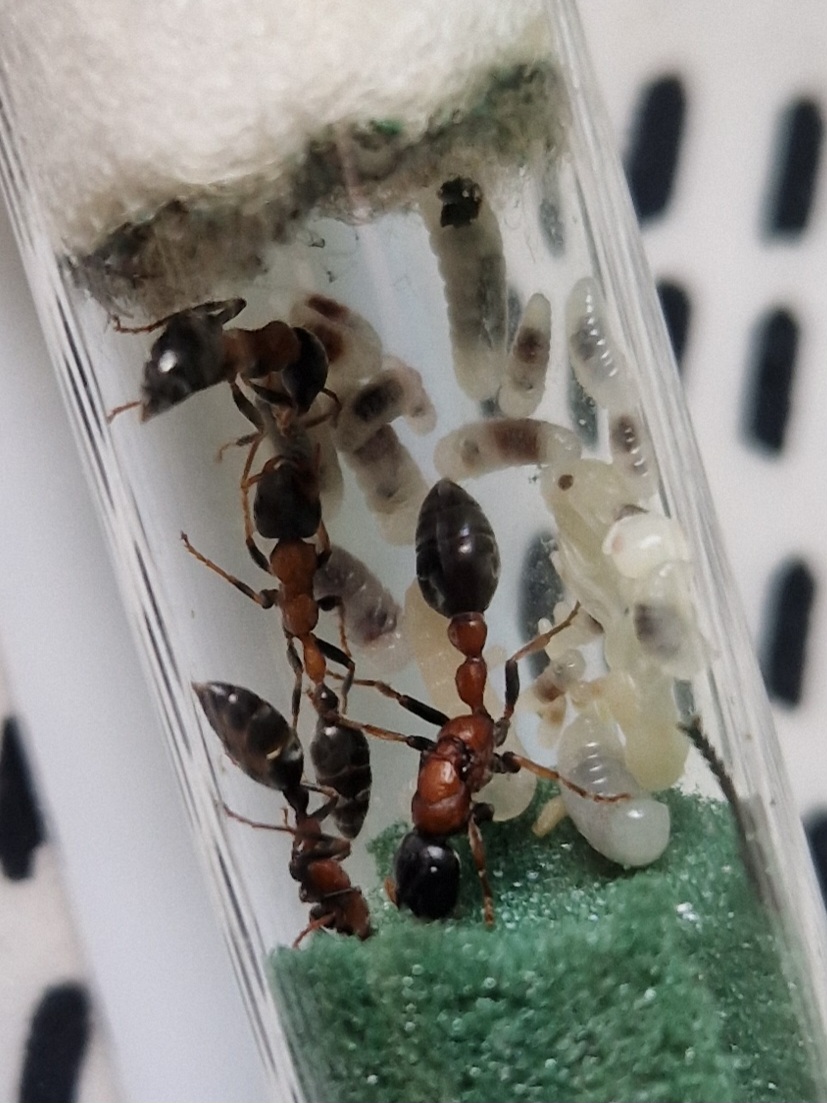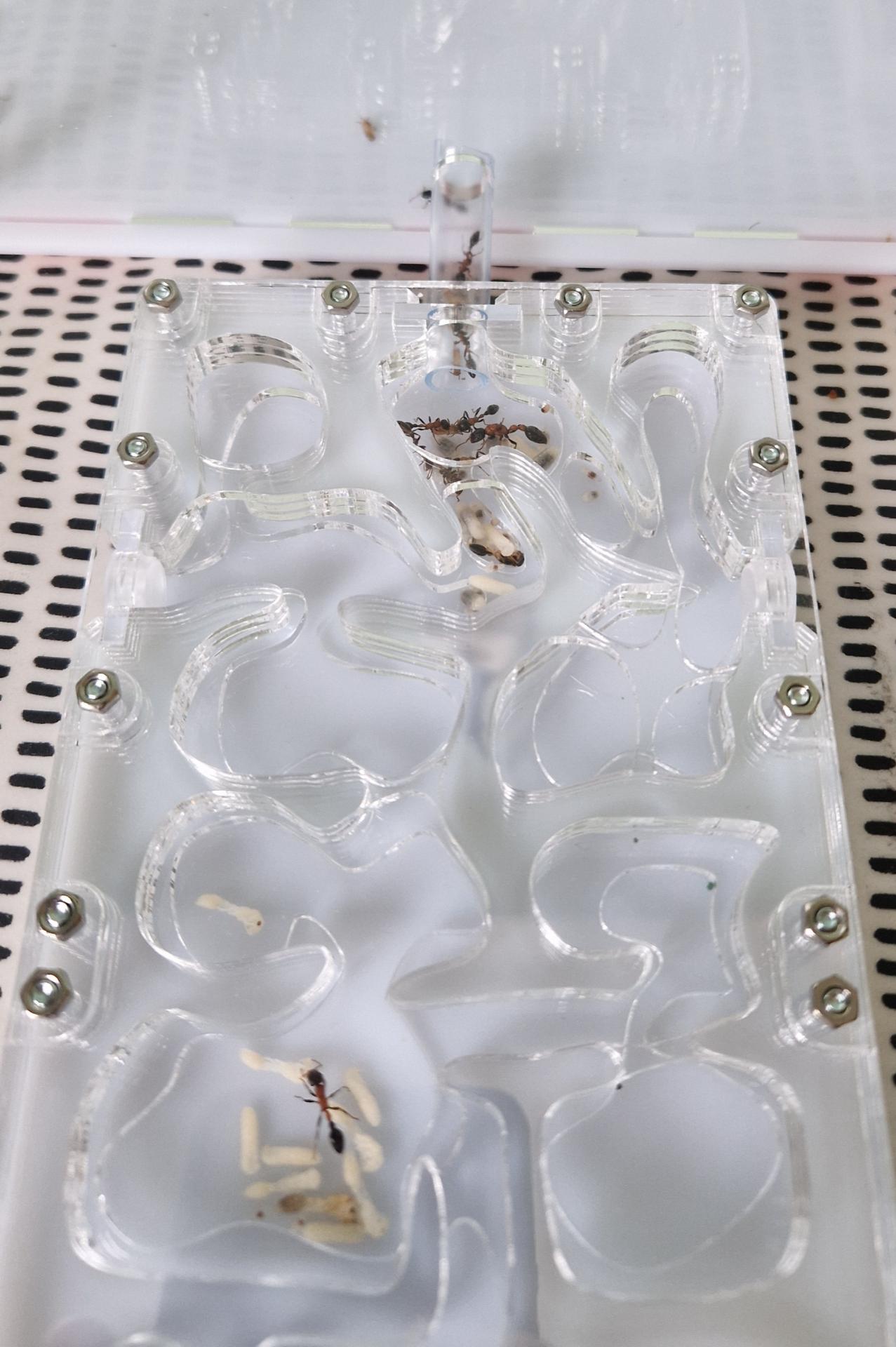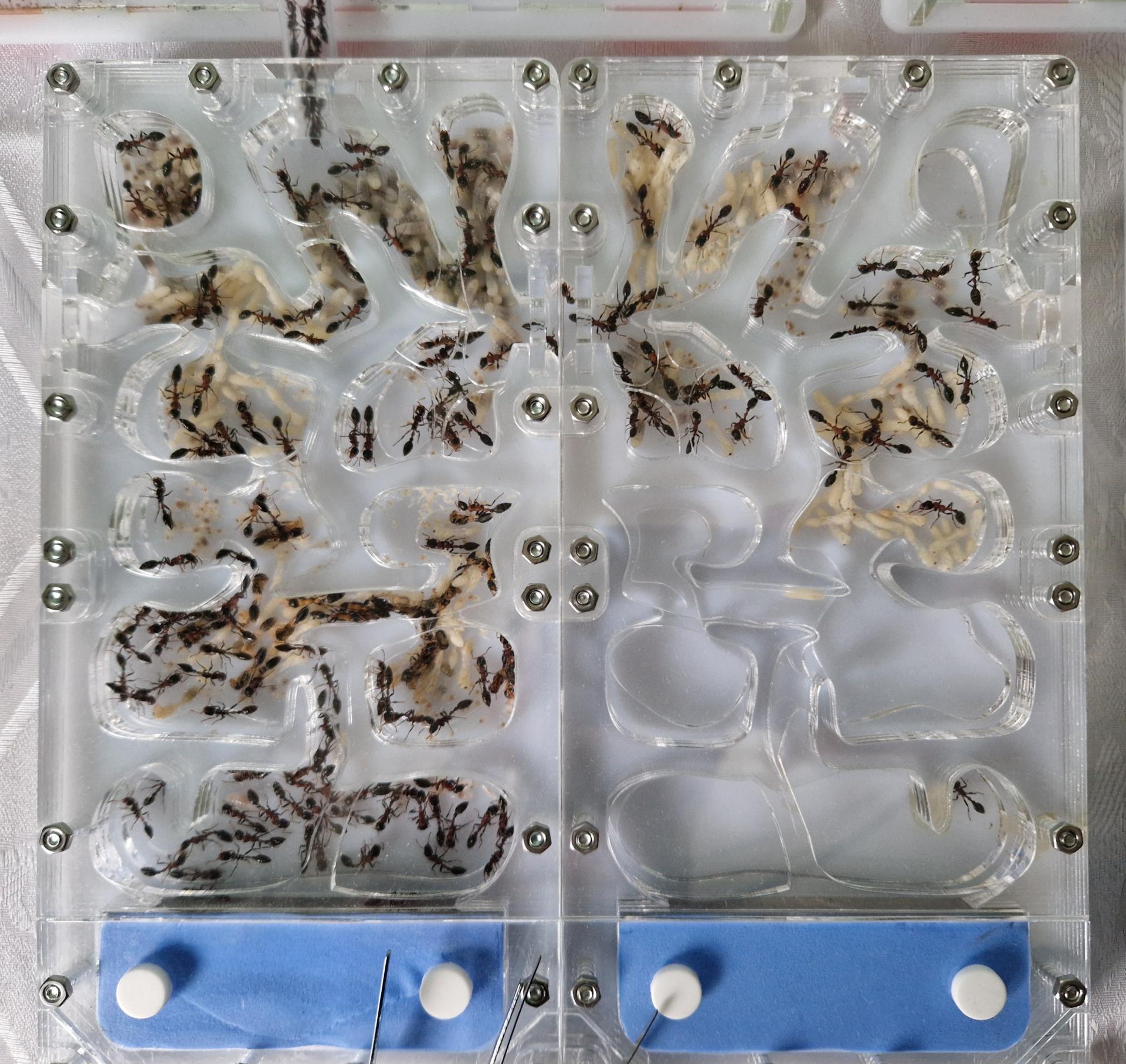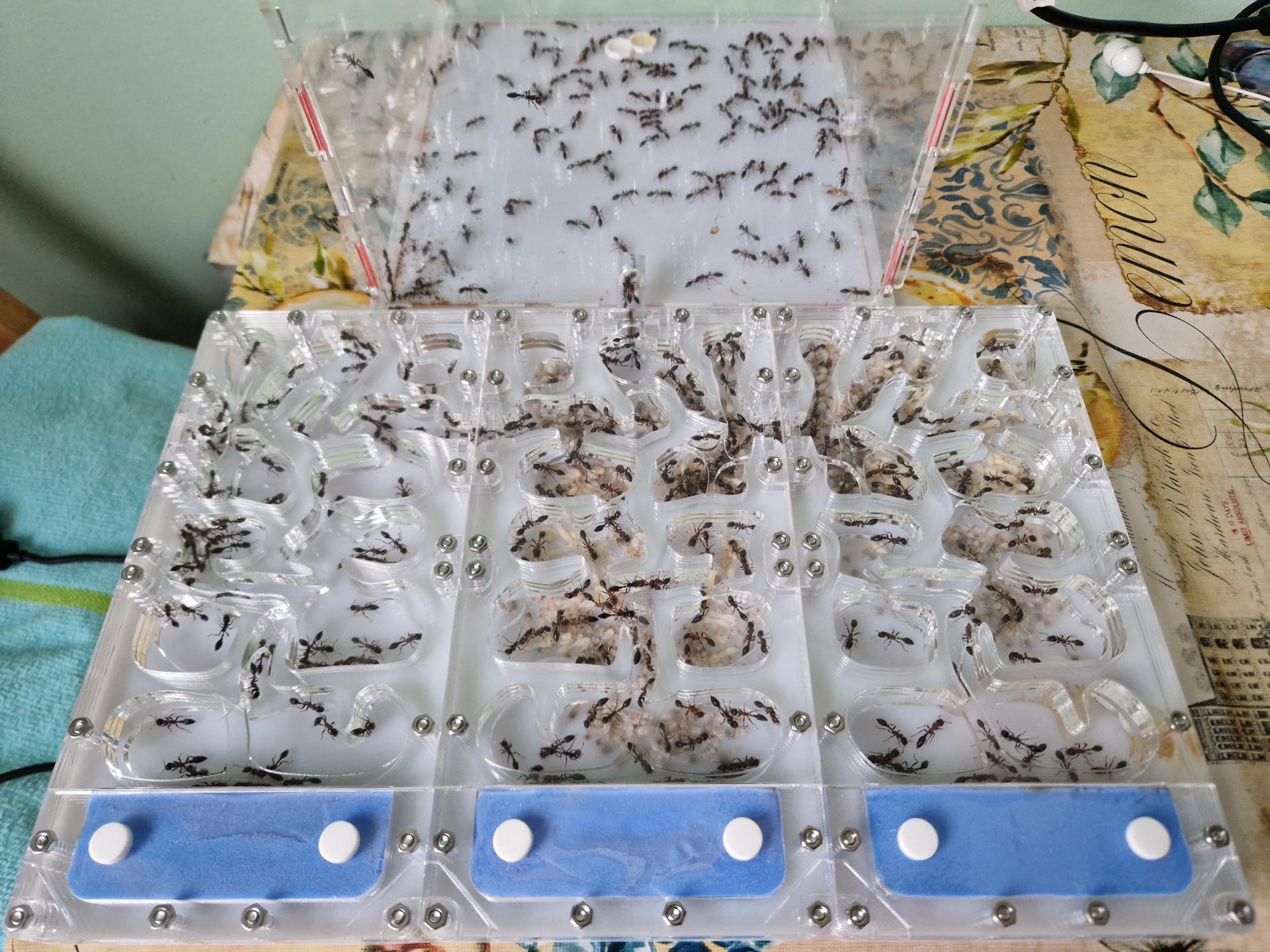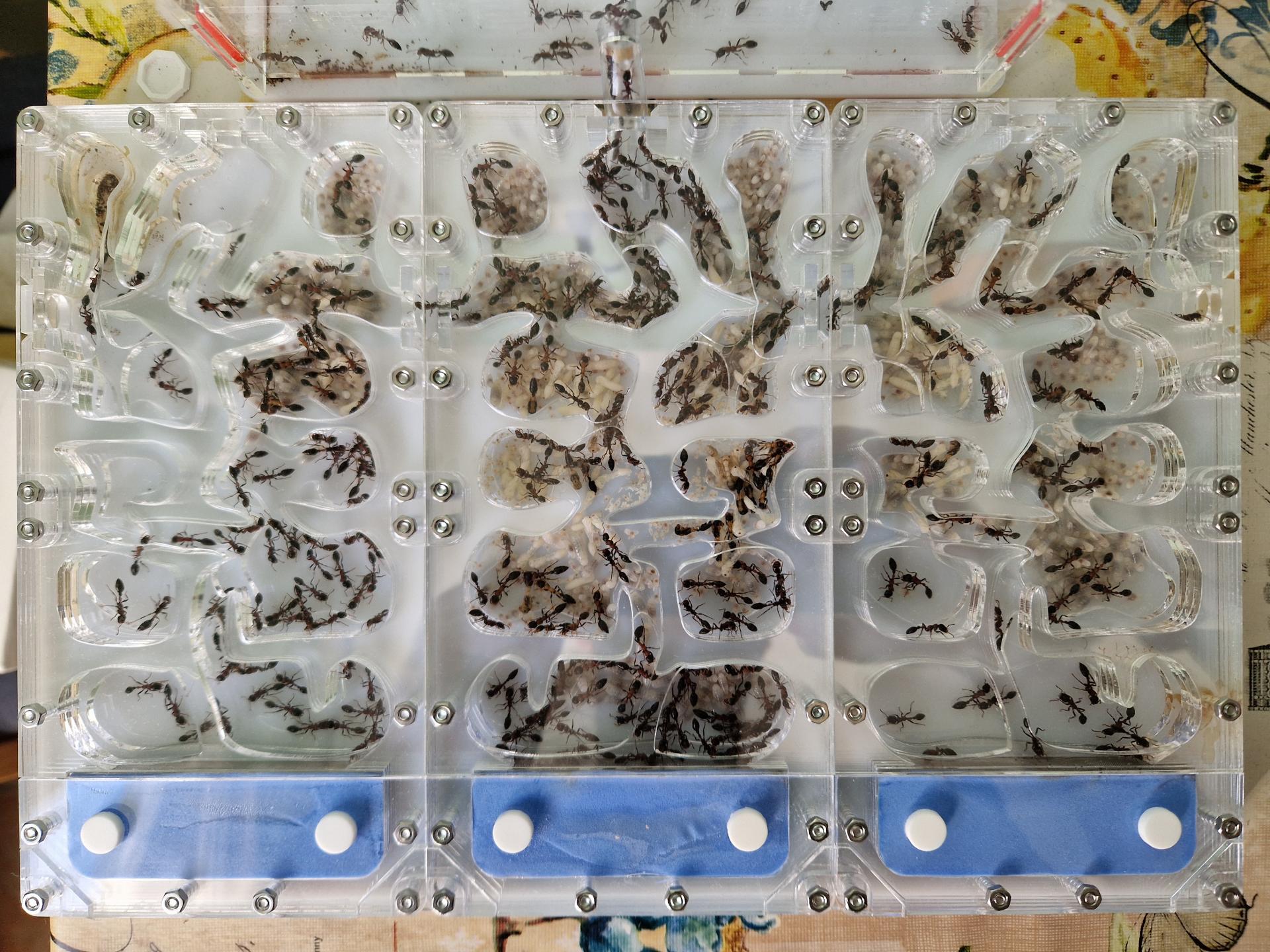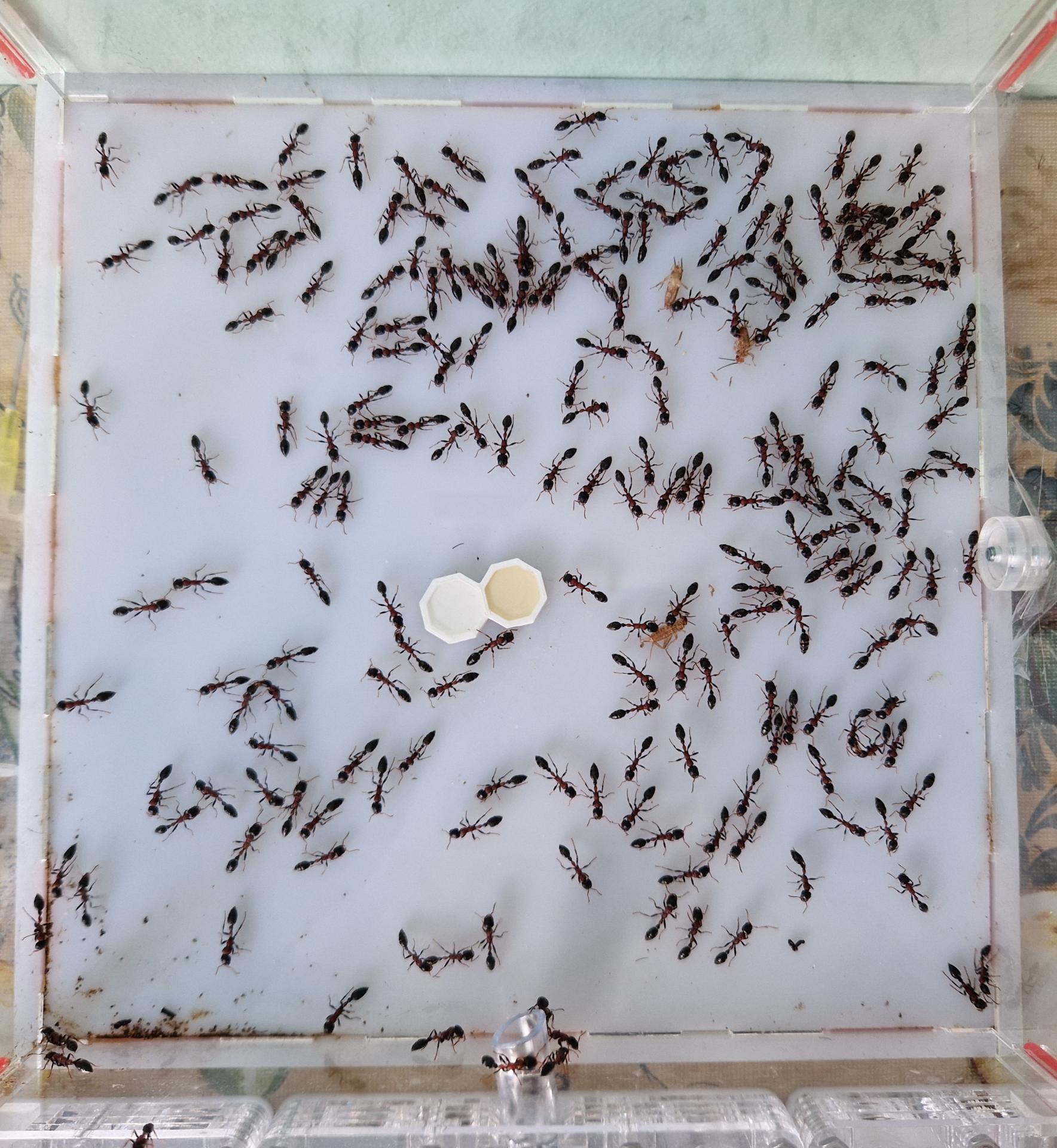Hello, I registered today and would like to report here about the history of my Tetraponera rufonigra colony.
In January 2024, I ordered a small colony of 1 queen with about 10-20 workers and brood from an Asian vendor.
Unfortunately the package was dispatched rather late and customs took a long time, most of the workers and brood were unfortunately lost in shipment, but the queen with 3 workers and a few fresh brood remained.
The "colony" was delivered to me in the condition shown below on 14 th February 2024, which was placed in a test tube:
The colony suffered quite a lot during the transport and grew relatively slowly afterwards, but by the beginning of May the first pupae had appeared and the larvae were already growing nicely:
By the end of June, the colony had reached 8 workers and several pupae had appeared, so I decided to move them to a (slightly oversized) acrylic nest with a outworld attached:
From this point on, the rearing of the colony was fairly uneventful, but the rearing of offspring accelerated during the summer to the point where I had to add a second nest part to the existing one on 12th November 2024.
As the colony continued to grow nicely, I added a third nest part two months later, on 2th January 2025:
There are currently about 500 workers in the colony (28th January 2025):
Finally, a brief summary of the care of the colony:
The colony is kept at approximately 26-28C in summer, dropping to 24-25C in winter.
I keep the nest moderately humid by using sponges in the nest compartments, although most descriptions suggest that it is not necessary to increase the humidity in the nest.
Nevertheless, I have found that despite the availability of drier chambers, individuals actively use the more humid chambers.
In terms of food, the colony is fed 99% frozen fly-sized house crickets and a 1:1:2 ratio of honey-sugar water every day. With frozen food, I want to avoid unwanted mite infestation.
I recommend the species primarily for more experienced people, as they can be remarkably fast and aggressive, and their sting is similar to that of a house bee, and literature suggests that they can also cause more severe allergic reactions, so extra care should be taken to protect against escape.
I will share more updates on the colony later ![]() .
.
Edited by Yareus, January 28 2025 - 1:57 AM.




